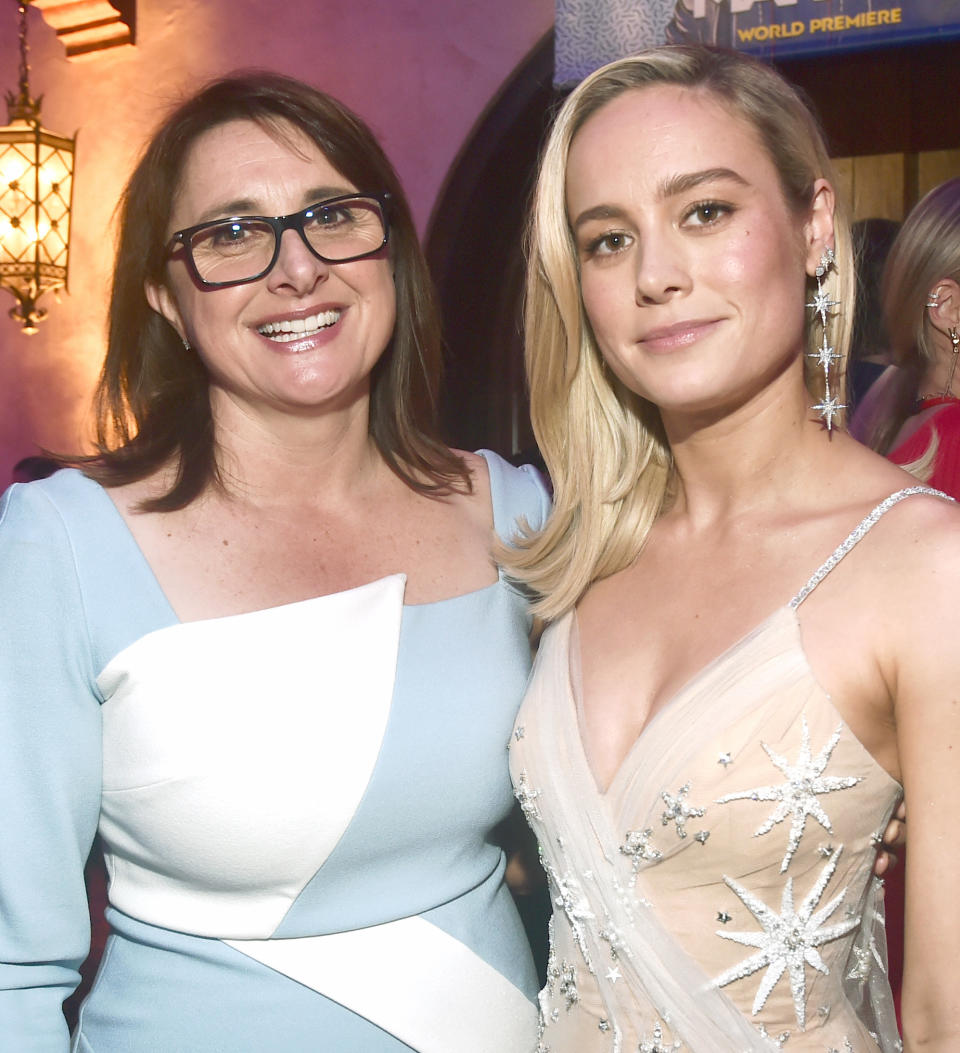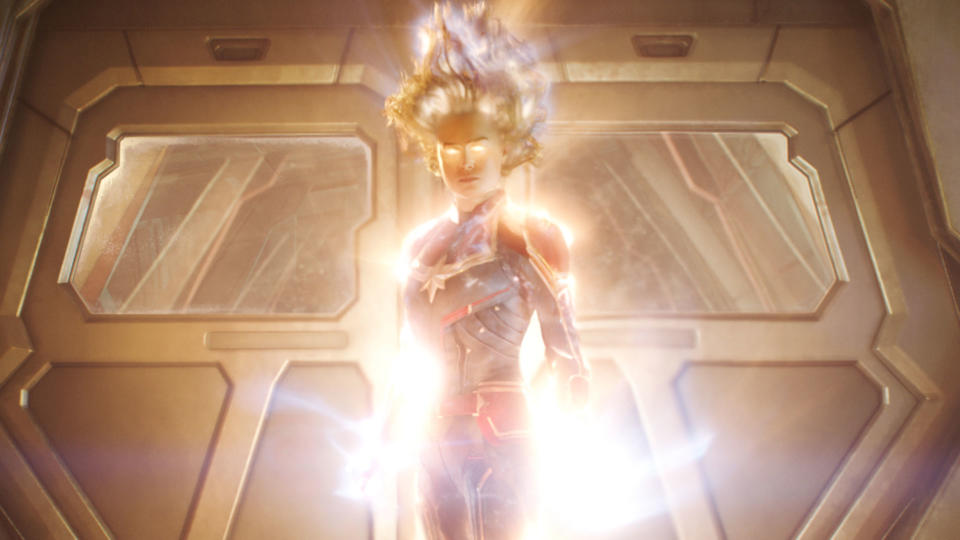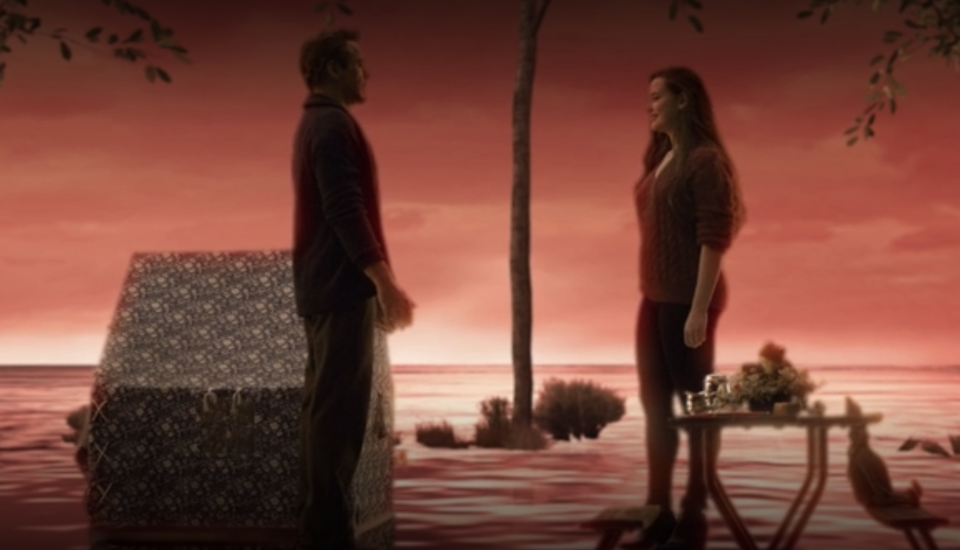Why you'll never see James Dean or any other dead actor in the Marvel Cinematic Universe

Last November, a new Vietnam War-era drama called Finding Jack achieved instant notoriety when producers announced that the film would feature the first performance by James Dean since the actor’s death in 1955.
Having acquired the rights to Dean’s likeness, the filmmakers intend to use archival footage and photos of Dean to build a full-body digital double that would have his youthful face. The public outcry to the news was swift and serious, with Captain America himself, Chris Evans, leading the charge on Twitter. “This is awful,” the once (and maybe future?) Steve Rogers wrote. “The complete lack of understanding here is shameful.”
Not surprisingly, Marvel Studios is on Team Cap’s side for this particular battle. In separate conversations with the visual effects teams behind Avengers: Endgame and Captain Marvel — both of which are on the shortlist for a Visual Effects Oscar when nominations are announced on 13 January — they made it clear that the Marvel Cinematic Universe won’t receive posthumous visits from long-deceased, or even recently-deceased, movie stars.
Read more: RDJ admits Iron Man could return to the MCU
“We haven’t considered that,” says Victoria Alonso, one of Endgame’s executive producers, and the executive vice president of production at Marvel Studios, which has been at the forefront of digitally de-aging actors and creating characters like Thanos and Hulk out of whole code.

Unlike the Dean situation, both of those processes start with a living, breathing actor whose dramatic performance forms the basis for what audiences eventually see in the cinema.
“The experience of doing Thanos and Hulk brought it into very clear view that you need the live performance of Josh Brolin and Mark Ruffalo,” Alonso emphasises.
“That’s the magic that’s onscreen; we do everything we can to put them in a position with their counterparts so that we’re getting as much of their brilliance was we possibly can in the final imagery.” (It’s worth noting that this decision distinguishes Marvel Studios from Disney’s other major franchise, the Star Wars movies, which revived Peter Cushing for a divisive appearance as Grand Moff Tarkin in Rogue One and most recently crafted a posthumous performance for Carrie Fisher in The Rise of Skywalker using deleted scenes and one special stand-in.)

Even if Marvel’s digital wizards could resurrect, say, Paul Newman for a cameo appearance alongside Robert Redford’s Alexander Pierce, the bigger question is whether they should.
“It’s a little bit of a philosophical and moral decision that is always going to be a studio level decision,” muses Industrial Light & Magic VFX supervisor Craig Hammack, who is part of the Captain Marvel team. “It is something that we’re all aware of, because the possibilities are coming and our hope is that it doesn't happen in an irresponsible way. Personally, I don't want to see something that's not the performance of the person represented as the person.”
Read more: The Eternals star wows with transformation
Captain Marvel additional VFX supervisor Janelle Croshaw Ralla says that her recent experiences have led her to the same conclusion. “It’s a very sensitive subject to bring people back from the dead. I think it has to be used wisely. Some projects that I've been exploring this year are creating people from scratch: creating new pop stars and creating new digital humans that don't exist. Even with that, you have to have this underlying person giving the performance. So far, that essence has to come from a real human being — the computer can't do it. But who knows in the future?”

In the present day, Marvel continues to perfect and refine the de-aging process that has turned back the clock for such actors as Michael Douglas, Robert Downey Jr., Kurt Russell and, most recently, Samuel L. Jackson, aka Nick Fury. For the 1990s-set Captain Marvel, Ralla oversaw Jackson’s digital transformation into his Pulp Fiction-era self, an illusion that was maintained for the entire film.
“Marvel has been doing it for a while, but it's been in very small chunks,” she explains. “It's never been the leading man or woman throughout the whole film. We had three vendors — Lola Visual Effects, Rising Sun Pictures and Screen Scene — work on the de-aging and there were over 500 shots. Our main goal was always to not take away from Sam’s performance, whether we were adjusting posture, his face or his wardrobe.”
Watch: Samuel L. Jackson on which film Marvel used for his de-aged self:
Interestingly, Screen Scene also worked on Martin Scorsese’s The Irishman, which along with Ang Lee’s Gemini Man was the year’s highest-profile non-Marvel experiments in de-aging veteran actors.
“The interesting thing about Captain Marvel is that we had a very short post schedule — the entire shoot and post was probably nine months or so whereas The Irishman has actually been working on it for four years,” says Ralla. “Gemini Man was all CG, so it was a very different methodology. Ours is a very organic approach where we’re hands off on set; there were no additional cameras or additional data needed. Sam was able to focus on his performance and the directors [Anna Boden and Ryan Fleck] could focus on their really aggressive shooting schedule.”
Assemble below for some other VFX details Yahoo Entertainment learned about Avengers: Endgame and Captain Marvel.
Making the world of tomorrow today

It may not sound like a huge task to imagine what Earth might look like five years from now. But what if half of Earth’s population disappeared before that time jump? That’s the question that confronted Endgame’s VFX team as they set about designing a post-Snapture planet.
“We worked with [production designer] Charlie Wood to make sure that we could bring to the screen what he envisioned,” says Marvel VFX producer Jen Underdah. “We had many conversations about what would happen if half of the gardeners in the world are gone, or half of the people that collect trash are gone. What would be the result of that? The thing is that it wouldn’t be all awful: the lushness of the greenery that would come about wouldn’t be a bad thing. So we didn’t want it to feel like the end of the world: there’s just a cloud over the world that we know, a lingering sadness of the people we lost contrasted with the beauty of nature that’s still there.”
Similarly, Avengers HQ intended to still look and feel functional … just empty. “We wanted the compound to look like it hadn’t been in full use, but do it subtly so that it didn’t take you out of the story.”
It’s time for saying goodbye

One of the benefits of signing up for Disney+ — besides Baby Yoda, of course — is finally seeing the deleted Iron Man scene that makes his heroic sacrifice all the more emotional. After vanquishing Thanos, Robert Downey Jr.’s Tony Stark finds himself at the otherworldly “Way Station” where he has a brief conversation with his grown-up daughter, Morgan (played by Katherine Langford).
Read more: Karen Gillan praises Guardians 3 script
The design of that scene is meant to echo a similar moment in Infinity War where Thanos visits with young Gamora, the daughter he killed in pursuit of the Soul Stone, but with a few subtle differences. “The conversations we had was that a different soul meant a different environment, but you’re in the same moment so it’s all one core soul,” says Alonso, adding that the VFX artists never finished work on the sequence once it became clear it wouldn’t make the theatrical cut. “The scene came out quite early on … so it wasn’t fully formed. But the whole idea was that you have a father and a daughter in a moment of reckoning for their love of each other. So we really focused on that, not on trying to create a whole new background for it.”
The stars her destination

When Yahoo Entertainment spoke with Captain Marvel editor Debbie Berman earlier this year, she outlined some of the changes that occurred during the movie’s accelerated production schedule. Those changes included a revised ending that gave her a specific mission after mastering her powers and defending the shape-shifting Skrull against the Kree agressors. In the original version of the film, Carol Danvers (Brie Larson) flew off into space alone, but that was amended to depict her accompanying the Skrull on their search for a new home.
“Originally she shot up into space, and then turned away from Earth and jetted off into the stars,” confirms Third Floor pre-visualization supervisor Shannon Justison. “It felt very Lone Ranger of her to just go off by herself and not care about anybody, especially when there was this whole storylines about the Skrulls. We sort of neglected that nothing is fixed for them — they’re still refugees. The idea became that Carol wouldn’t just go off and have fun adventures: she would try to help, because that’s who she is.”
Stan’s still the man

Sam Jackson wasn’t the only Captain Marvel cast member who was de-aged to his ’90s self for the film. Luma Pictures VFX supervisor Kevin Souls says that Marvel icon Stan Lee received the same treatment for one of his final MCU cameos. (Lee passed away in 2018, but had already filmed his appearances in Captain Marvel and Endgame.)
In the movie, Lee is glimpsed on an L.A. subway train, reading the script for Kevin Smith’s 1995 cult comedy Mallrats, one of Lee’s most celebrated film appearances. In a tribute to Lee, and that now-beloved film, they subtly matched his Captain Marvel appearance to his Mallrats persona. “We made his hair darker and de-aged him a bit,” Souls says. It’s not a superhero secret anymore.
Avengers: Endgame and Captain Marvel are on DVD, Blu-ray and Digital Download now.

 Yahoo Movies
Yahoo Movies 

